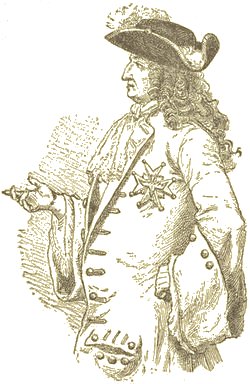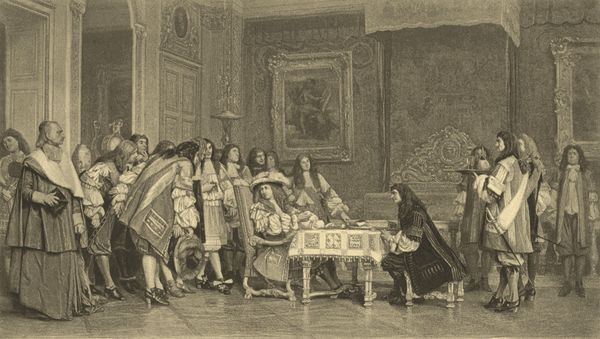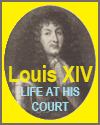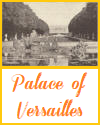Louis XIV of France (1638-1715) |
| www.studenthandouts.com > Historical Figures > "L" Names > Louis XIV of France (1638-1715) |
 Louis XIV, also known as Louis the Great or the Sun King, reigned as King of France from 1643 until his death in 1715, making his 72-year reign one of the longest in European history. Born on September 5, 1638, to Louis XIII and Anne of Austria, Louis XIV ascended to the throne at the tender age of four, with his mother acting as regent and Cardinal Mazarin as his chief minister during his early years.
Louis XIV, also known as Louis the Great or the Sun King, reigned as King of France from 1643 until his death in 1715, making his 72-year reign one of the longest in European history. Born on September 5, 1638, to Louis XIII and Anne of Austria, Louis XIV ascended to the throne at the tender age of four, with his mother acting as regent and Cardinal Mazarin as his chief minister during his early years.
Louis XIV's reign is often synonymous with the absolute monarchy and the age of French grandeur. He purportedly declared, "L'État, c'est moi" ("I am the state"), embodying the absolute power he wielded. His reign centralized and consolidated power in the monarchy, reducing the influence of the nobility and other feudal powers. One of his first significant actions after Mazarin's death in 1661 was to assume direct control of the government, a departure from the reliance on powerful ministers. A major aspect of Louis XIV's rule was his extensive and costly military campaigns, aimed at expanding French territories and asserting dominance in Europe. Wars such as the War of Devolution, the Franco-Dutch War, the War of the League of Augsburg, and the War of the Spanish Succession had significant impacts on European politics and the balance of power. Louis XIV also undertook grand architectural projects, the most famous being the Palace of Versailles. Initially a hunting lodge, Versailles was transformed into a magnificent palace symbolizing royal authority and the centralized state. The palace became the political, cultural, and social center of France, with the king and his court residing there. The opulence of Versailles was intended to awe and impress both domestic and foreign audiences, reinforcing the image of Louis XIV as the Sun King.  Culturally, Louis XIV's reign saw a flourishing of the arts. He was a patron of literature, music, theater, and the visual arts, leading to a golden age of French culture. The establishment of institutions like the Académie Française and the Royal Academy of Painting and Sculpture contributed to this cultural renaissance.
Culturally, Louis XIV's reign saw a flourishing of the arts. He was a patron of literature, music, theater, and the visual arts, leading to a golden age of French culture. The establishment of institutions like the Académie Française and the Royal Academy of Painting and Sculpture contributed to this cultural renaissance.
Despite his successes, Louis XIV's reign also faced criticism and challenges. His relentless wars strained France's finances, leading to significant debt and economic difficulties. His revocation of the Edict of Nantes in 1685, which had granted religious tolerance to Protestants, led to the persecution of Huguenots and the exodus of many skilled workers and merchants, harming the economy. Louis XIV died on September 1, 1715, leaving a mixed legacy. While he elevated France to unprecedented heights of power and cultural achievement, his reign also sowed the seeds of economic hardship and discontent that would eventually contribute to the French Revolution. His absolute rule, grandiose ambitions, and cultural patronage make him one of the most iconic and influential monarchs in European history. |
 |
 |
 |
 |
|||||||
| Life at the Court of Louis XIV (1638-1715) | Map of the Acquisitions of Louis XIV of France | Palace of Versailles | Interactive Map Quiz on the Acquisitions of France's Louis XIV |
| Global Absolutism Books and Films | Global Absolutism Outlines and PowerPoints |
| Global Absolutism Maps and Pictures | Global Absolutism Study Games |
| Global Absolutism Miscellany | Global Absolutism Worksheets |
| www.studenthandouts.com > Historical Figures > "L" Names > Louis XIV of France (1638-1715) |






